
Microsoft Teams
Microsoft Teams is a collaboration platform that allows you to chat, share files, and hold meetings all in one application. It is integrated and built on top of other Office 365 applications including OneDrive, SharePoint Online, and your cloud email Calendar. It is available for free to all faculty and staff of UC San Diego Health.
Log in using your @health.ucsd.edu account.
Features
- Chat one-on-one with other users, or in small groups
-
Make audio or video calls with other users
-
File sharing and collaboration
-
Invite external (guest) users to be part of your Team
-
Organize your team’s work, files and key resources using channels in your Team
-
Search for conversations, chats, files and people
-
Connect with anyone! All UCSD Health and Campus users are licensed for Teams, making it easier to add people to a team or search, call, and chat
-
Microsoft Teams live events are an extension of Teams meetings that enable you to schedule and produce events that stream to large online audiences!
-
Teams Meetings vs Zoom Meetings
Microsoft Teams enabled apps
- PowerPoint
- Excel
- Word
- OneNote
- OneDrive
- Stream*
- SharePoint
- Outlook
- To Do*
- List*
- Azure DevOps*
- GitHub*
- Microsoft Bookings*
- Project*
- RSS*
- SharePoint News*
*Enabled but limited support
|
Third Party Apps
- Adobe Creative Cloud*
- Adobe Acrobat
- Adobe Acrobat Sign*
- Lucidchart
- Smartsheet*
- SurveyMonkey*
- Zoom
|
Teams vs Zoom
Teams vs Zoom online meeting scenarios
Scenario
|
Product Suggested
|
I want users to be able to call-in to a meeting with a phone
| Zoom
|
I want to record an online meeting directly to the cloud and only share the video with UCSD employees
| Teams
|
I want to record an online meeting without using the cloud
| Zoom
|
I want to record an online meeting and share it with non-UCSD employees
| Zoom
|
I want to provide live auto-generated captions for my meetings
| Teams |
I want to hold an online meeting where PHI is shared
| Zoom
|
Features
|
MS Teams
|
Zoom
|
Cost
| Included in O365 for all HS IS users
| Additional cost for PRO users, Add-ons - webinar, large meeting > 300. Basic users free
|
Able to invite users outside of organization
| Yes
| Yes
|
Dial In to a Meeting
| No
| Yes, US regional and other country exchanges available but has toll charge to caller
|
Join/Schedule meetings on Web and Desktop clients
| Yes
| Yes
|
Desktop clients for MAC, PC, and Smart Phones
| Yes
| Yes
|
Integrates with OWA calendar and MS OUTLOOK
| Yes
| Yes
|
HIPAA compliant
| Yes
| Yes
|
Can record meetings?
| Yes, to cloud. This video is not viewable by anyone outside of org and does not record notes or chats. Live Event: Only available for 180 days after live event
| Yes, local rec. Includes screensharing, up to 4 video streams, needs to be uploaded to streaming server for viewing by others, and does not record notes, chats, or QA
|
Integrated Chat
| Yes
| Yes, only with Zoom instance domain
|
Reporting attendee and registration
| Downloadable file only during meeting. No registrations.
| Yes but with qualifier on HIPAA compliance. Webinar registration and attendee reports are fully populated as well as Q & A report
|
Max default meeting participants
| 250
| 300 for PRO, 100 for basic
|
Max number of teams accounts
| Based on Microsoft Licensing
| Unlimited free basic and unlimited paid pro. Currently have 23K+ ZOOM users
|
Guest Access
| Available
| Unlimited
|
Webinar
| Live streamable to 10,000 attendees, 1 host per webinar but not able to add attendee to stage. Attendees can participate in Q&A. For further info see link below
| UCHealth subscribes to 100, 500, 3000 user and is live streamable. Attendees can participate in Q&A.
|
H.323/SIP client connection (Cisco/Polycom codec)
| No
| Yes, UCHEALTH has license
|
Account management
| Integrated with AD. Creating and sunsetting accounts integrated
| Can be integrated with AD/SSO but only has its own account management. Requires more hands on account management tool for adding and deleting accounts.
|
TEAMS IN WEB BROWSER
Teams can be accessed through any modern web browser. To access Teams:
-
Log in to the Microsoft Office 365 using your @health.ucsd.edu account.
-
Select Teams from the left-hand side toolbar or App launcher menu.
HELP RESOURCES
Teams Basics
| Chat & Calls
|
Meetings & Organization
|
Teams & Channels
|
**TEMPORARY MIGRATION PROBLEMS AND SOLUTIONS
This solution only applies temporarily until migration completes
- Login to Teams Campus Tenant with your
@ucsd.edu email.
- Click on the Top Right Menu
UC, San Diego.
- From the dropdown click, on
University California, San Diego (Guest), which is the Teams Health Tenant
If you see “M365 Migration Admin joined conversation” inside the Teams Chat section, it’s safe to ignore it. It’s part of the O365 Teams/OneDrive migration project.
This migration will allow you to see Chats/Conversation from the Campus tenant as an archive Chat. The Chat notification message might contain "Unknown App" or "Quest On Demand".
If you want to see your Teams chat/conversation from the Campus tenant, you can click on the
“Conversation History” button. See the screen shot below.



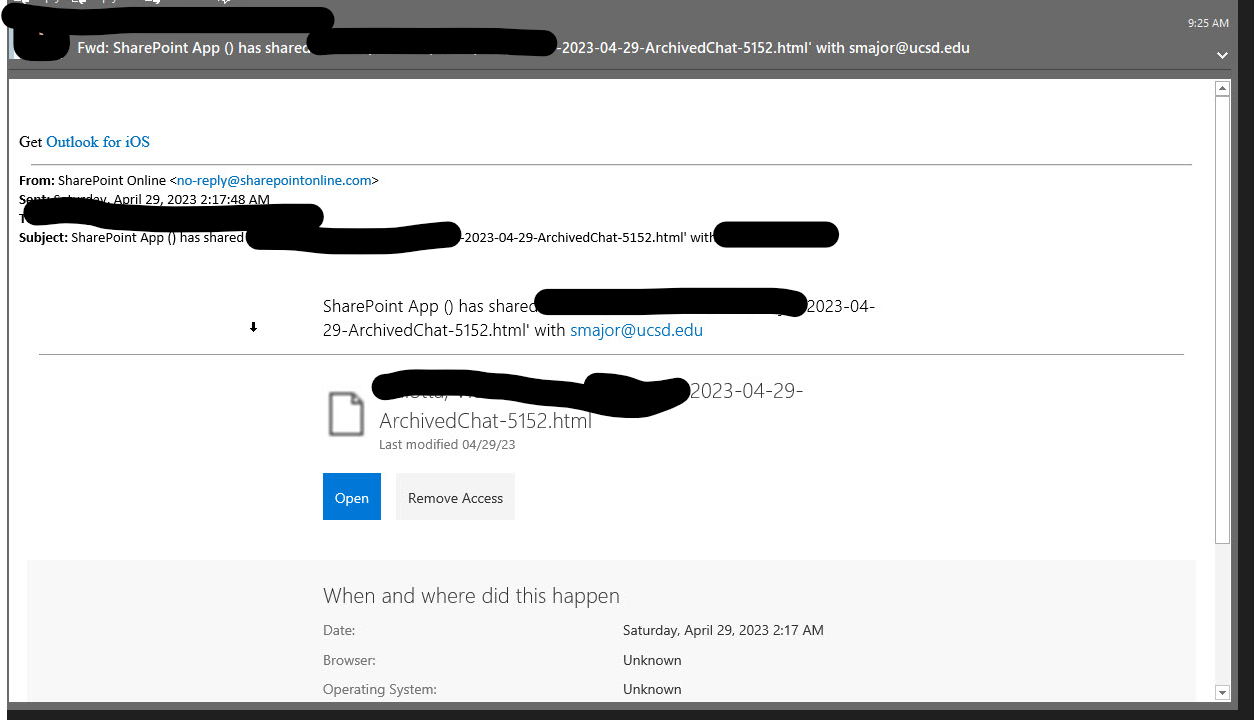
ADDING AND JOINING TEAMS - ACCESS
Teams can be accessed through any modern web browser. To access Teams:
-
Log in to the Microsoft Office 365 using your @health.ucsd.edu account.
-
Select Teams from the left-hand side toolbar or App launcher menu.
After the migration of some users from the Campus tenant of Teams to the Health tenant of Teams, some users in the Health tenant will need to join Campus tenant Teams, and some users in Campus tenant will need to join Health tenant Teams.
To add users from another tenant, an Owner of the Team must invite the user from the other tenant.
How a Team Owner can Add a Team User From Another Tenant
-
As an Owner in Teams, select the Team to which you will be adding a Guest
-
In the selected Team, click the three dots to bring up the context menu, and select “Add member”

- Enter the guest's email address
from the other tenant.
- For Team owners in Health, they would enter [UserNameHere]@ucsd.edu address for the user in Campus.
- OR
- For Team owners in Campus, they would enter [UserNameHere]@Health.ucsd.edu address for the user in Health.
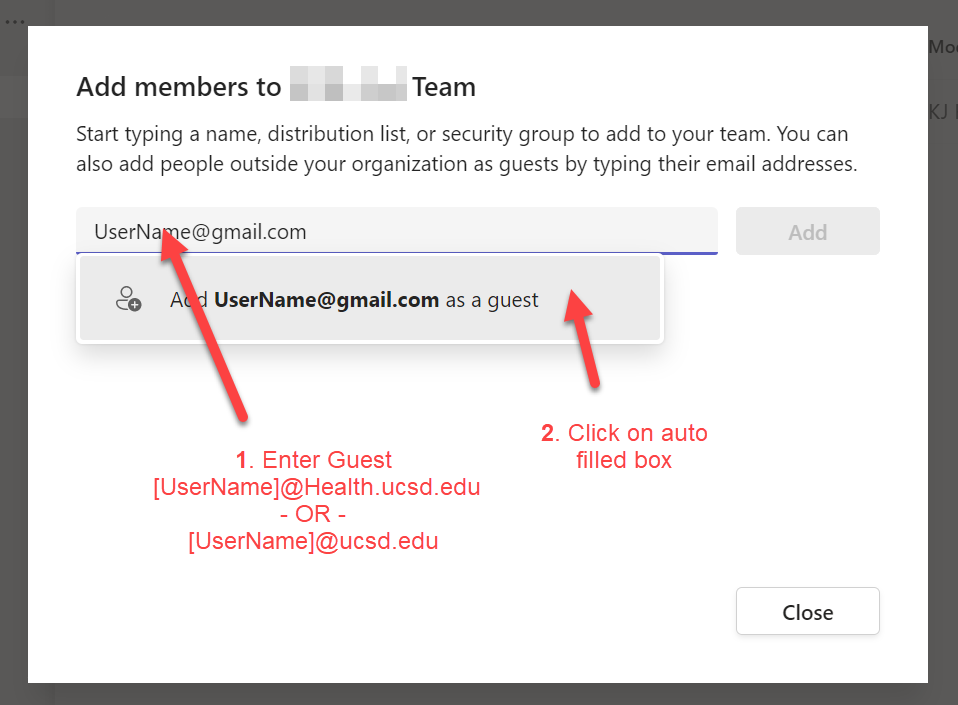
- Click on the auto filled box
- Select Edit guest information by clicking on the pencil icon and typing a friendly name. This is the name that will appear in Team chats.
Be sure to take the time to do this now—you won’t be able to do it later.
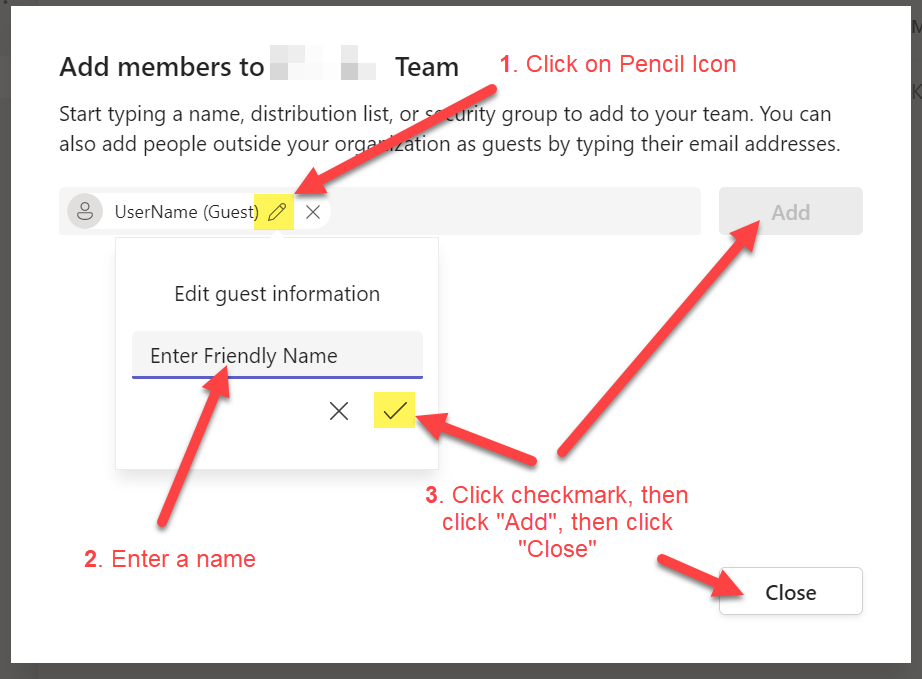
- Click the checkmark to complete the friendly name edit, Click “Add”, then Click “Close”
- If successful, Team Owners should see the person they invited under “Members and Guests”. If not, please repeat the steps to send an invitation. Note: Owners can see “Members and Guests” by click the three dots next to the Team Name and selecting “Manage Team” from the menu.

The person invited to join a tenant as a guest will get an email with a link in it
Guests will receive a welcome email invitation that includes some information about joining Teams and what the guest experience is like.
Once they have clicked on the invitation, they should be prompted to accept the “Permissions Requested” to join the team.
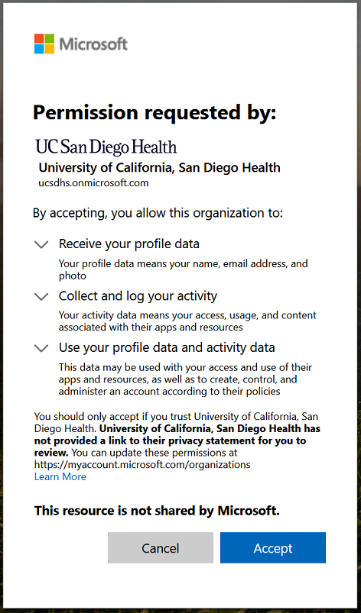
Health Teams have been migrated to the UC San Diego Heath O365 tenant.
Login to the Health tenant with your @health.ucsd.edu.
If you are a member of a Campus Team:
Login to the Campus tenant with your @health.ucsd account.
You are able to add external participants to group chats like any other tenant or guest account. To add an external person, enter their email address as a participant and then use the Search externally option (Figure 2). Teams checks the external access domain list to discover if federated chat is allowed with the participant's domain, and if it is, looks up Azure AD to find their account. If the account exists, Teams adds it to the chat.

Figure 2: Searching for an external participant to join a group chat
As shown in Figure 3, once a group chat has an external participant, Teams displays a prominent External label to advise everyone that they shouldn’t discuss company confidential information (unless it’s appropriate to share the information with an external person). External participants are also marked as such in the participant roster.
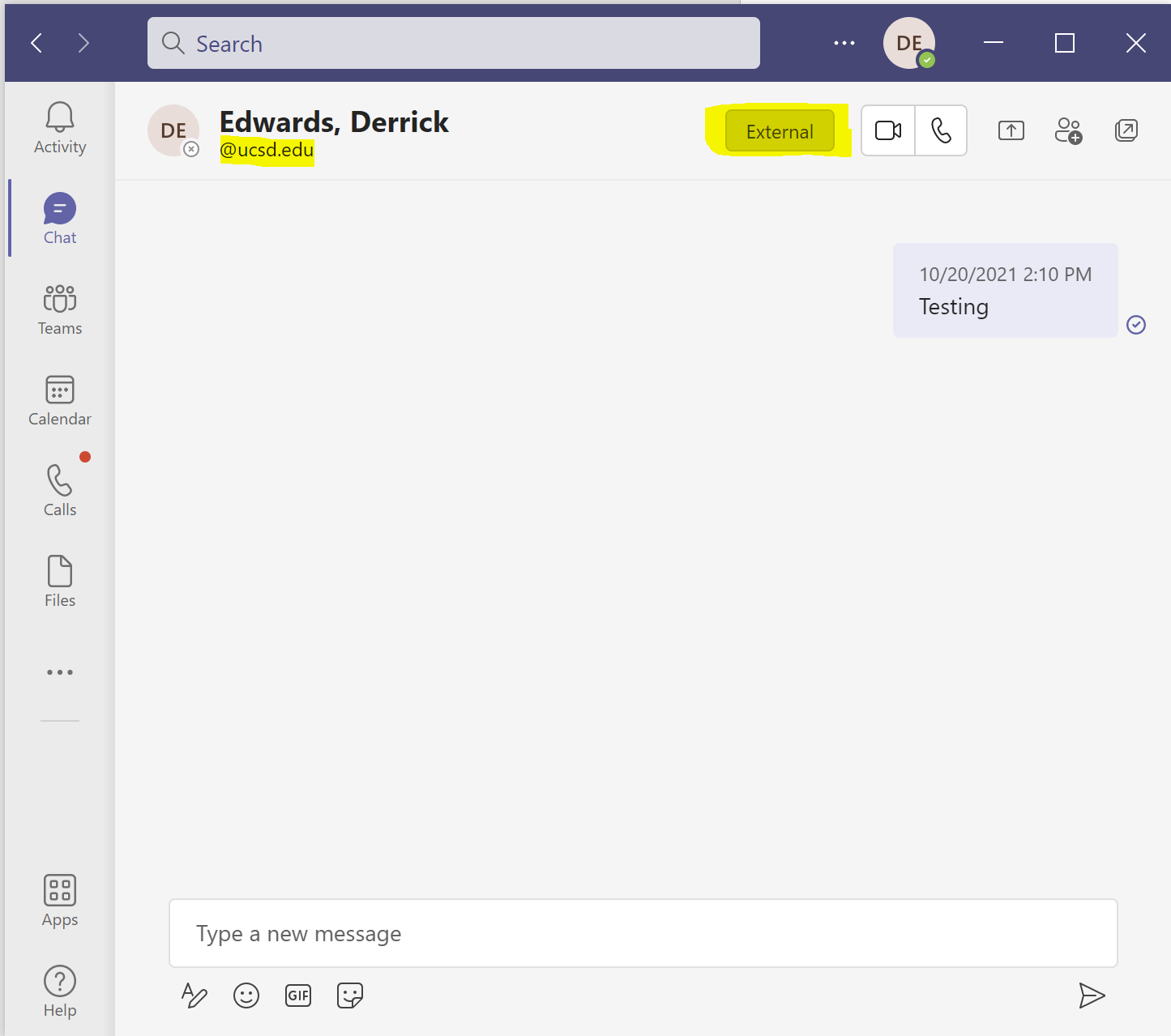

Figure 3: Teams group chat with an external (federated) participant
Step 1: Login into Teams using your
@health.ucsd.edu account
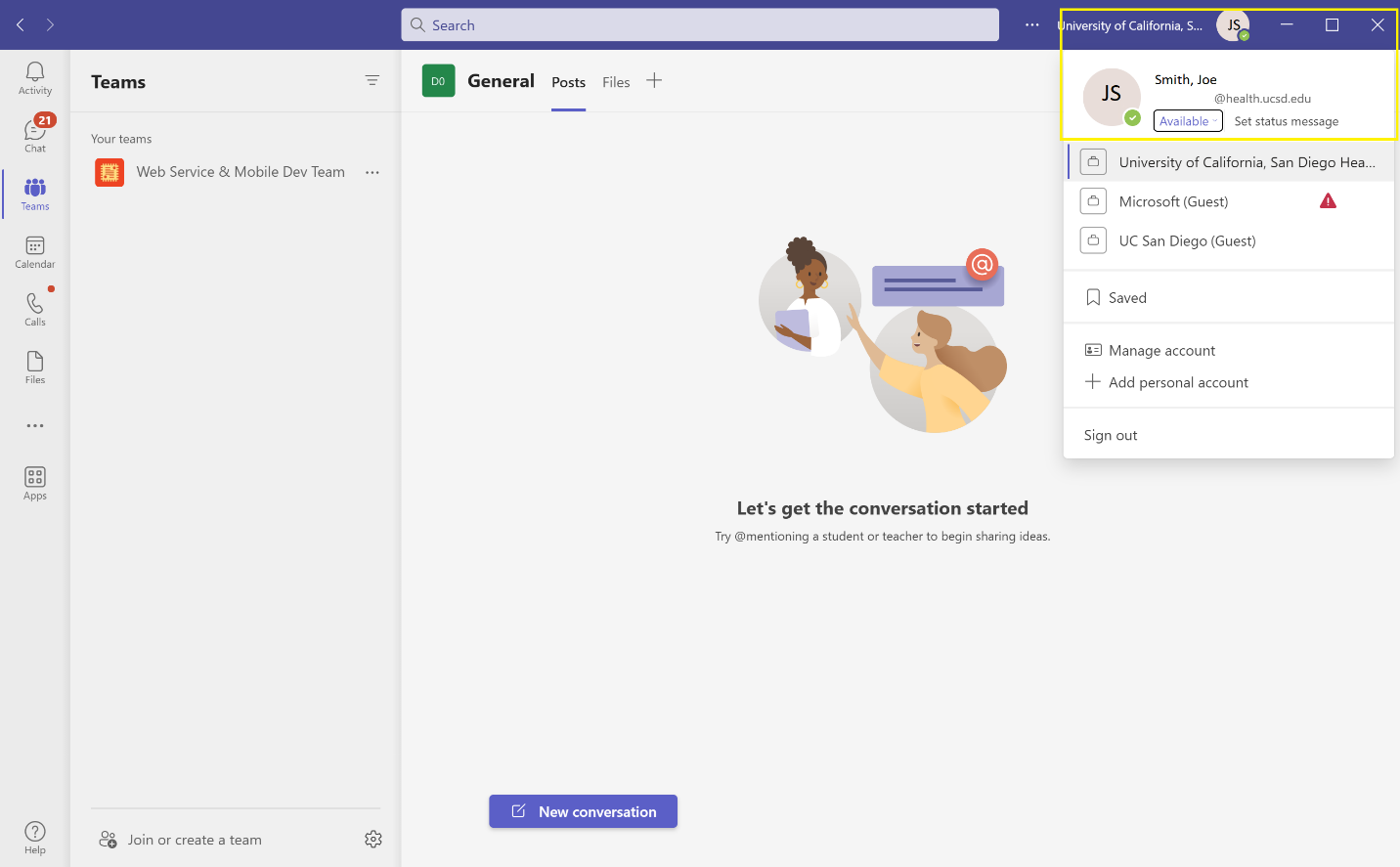
Step 2: Select
"Teams" from the left Negation window
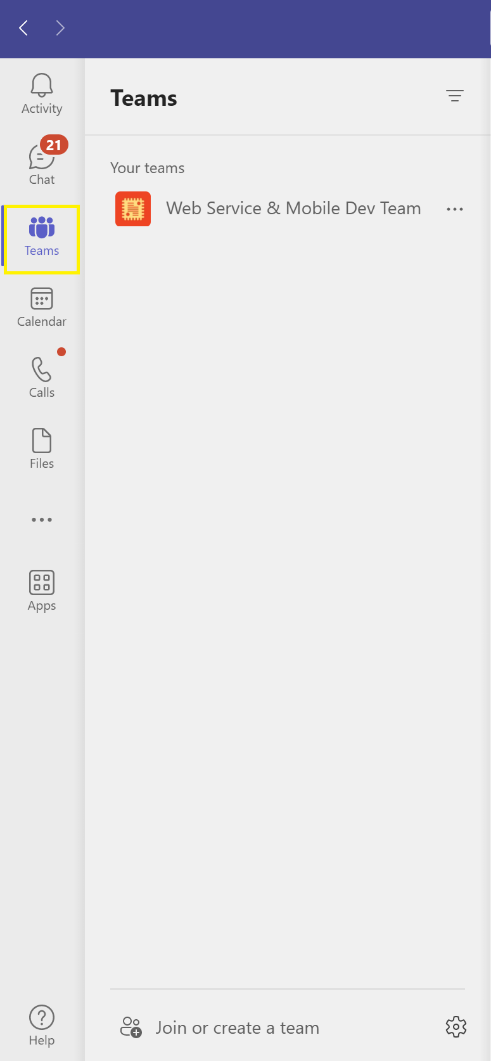
Step 3: Click
"Join or Create Team" button in the upper right corner
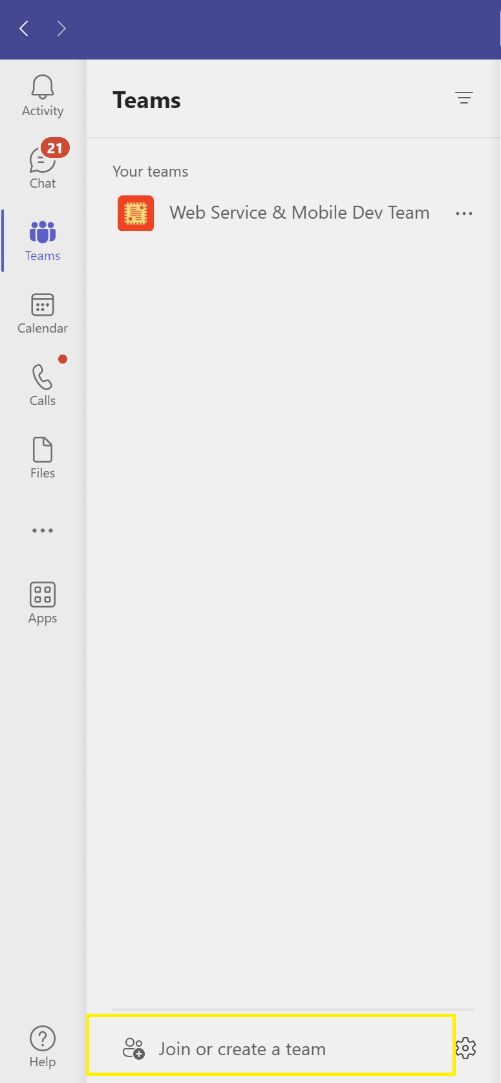
Step 4: Click
"Create Team"
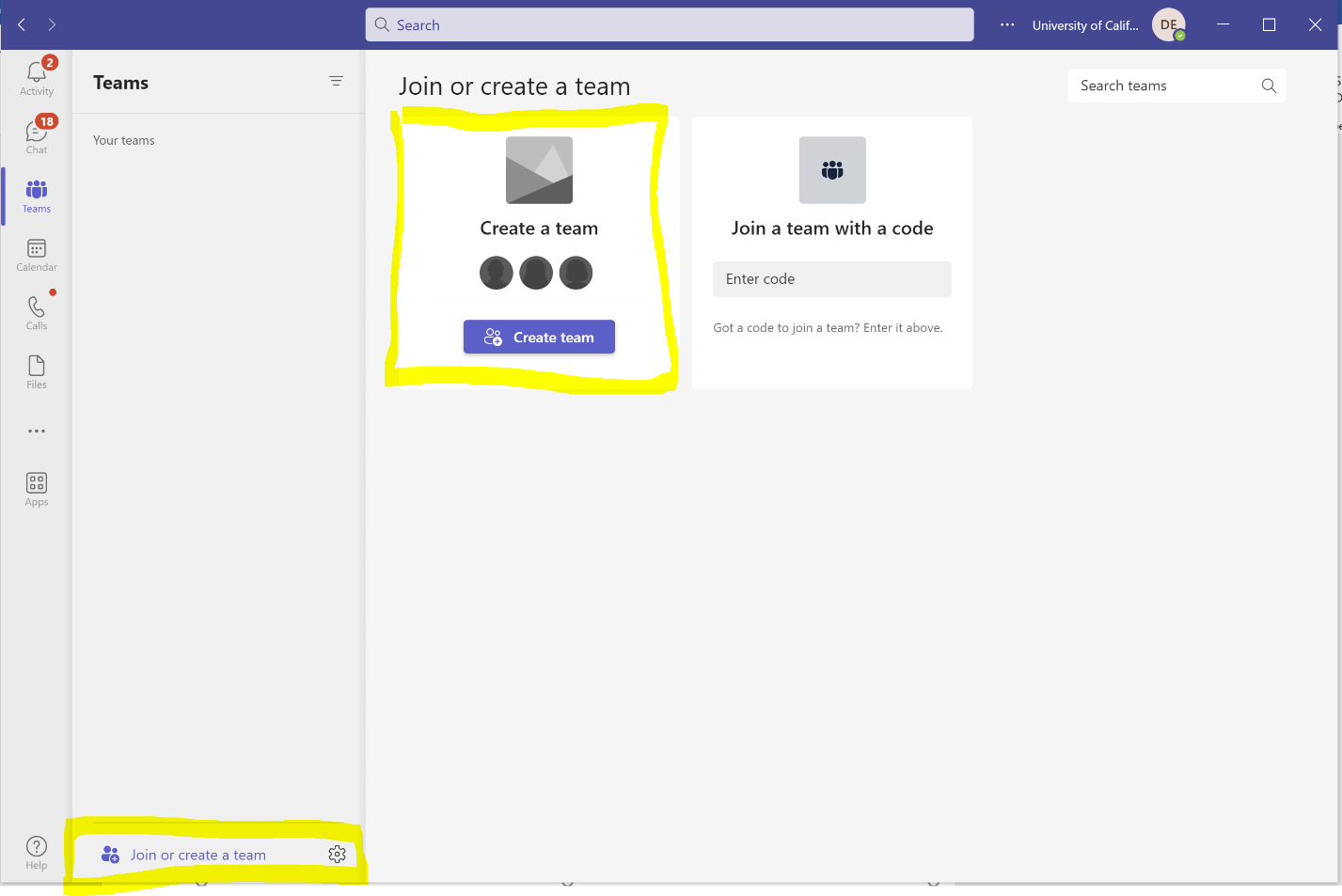
Step 5: Select team type as
"Other"
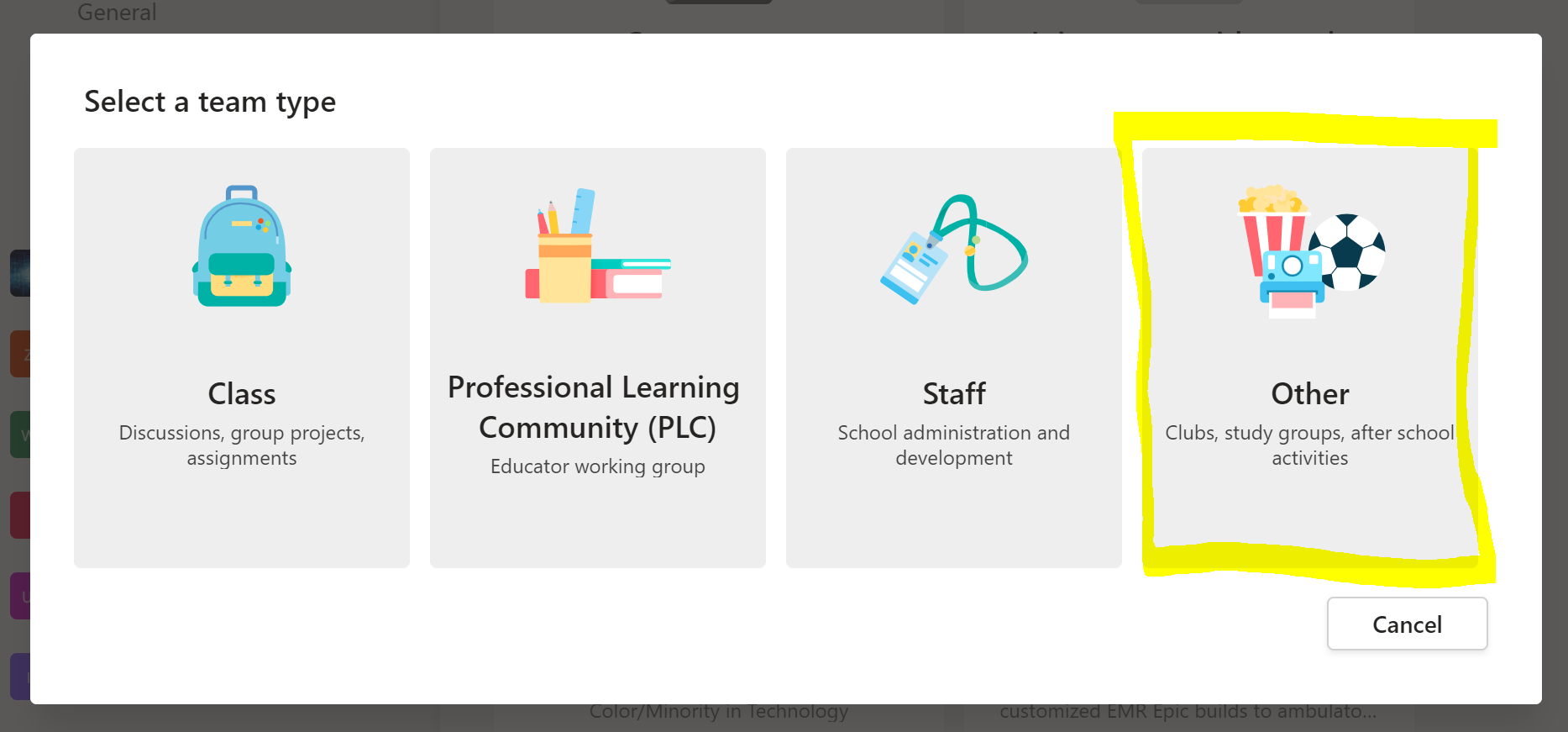
Step 6: Choose
"Private" if you want to manage the site
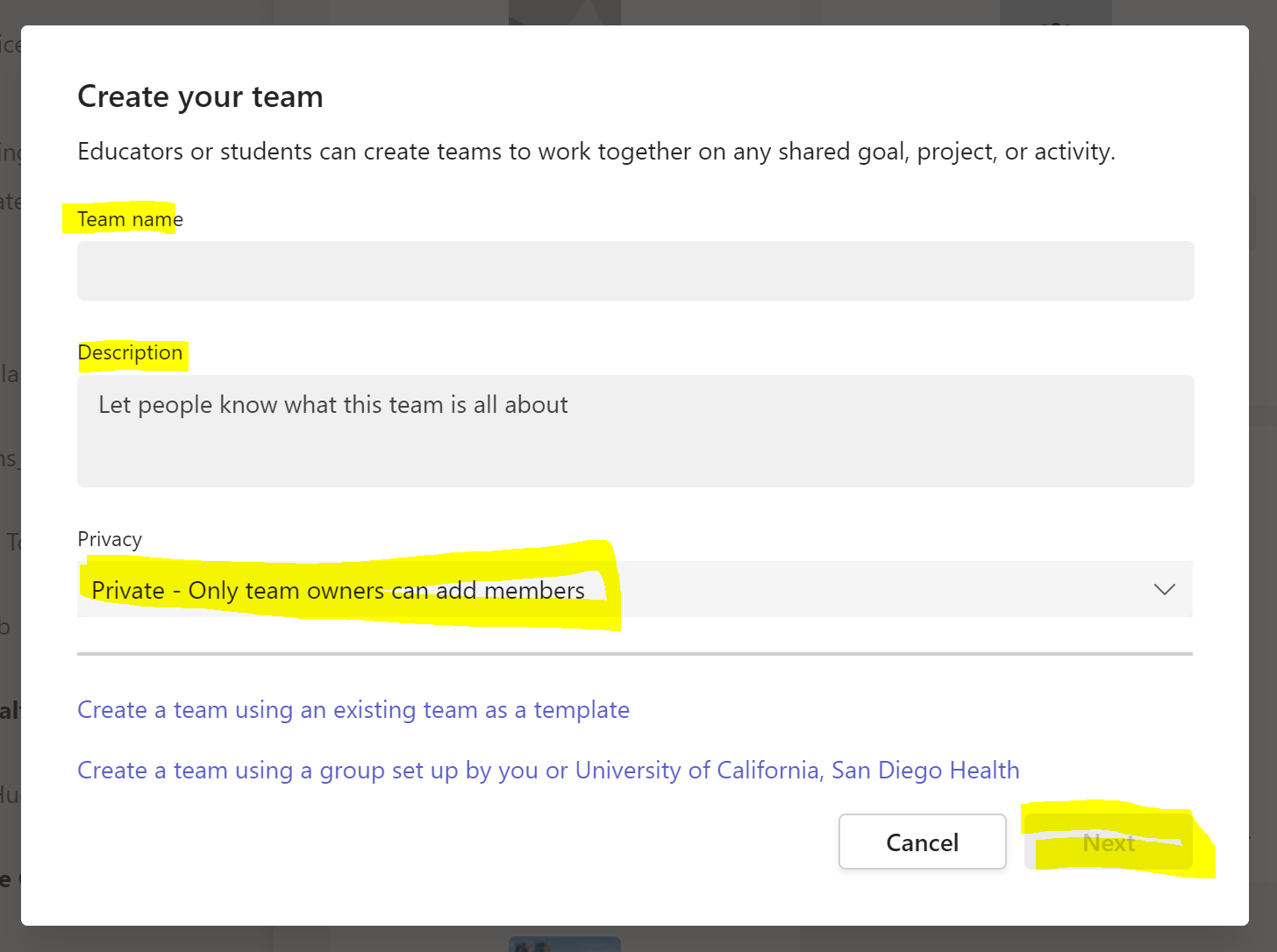
Step 7: after you are done creating Teams you can go to
"Open a SharePoint" to go to web version of your site
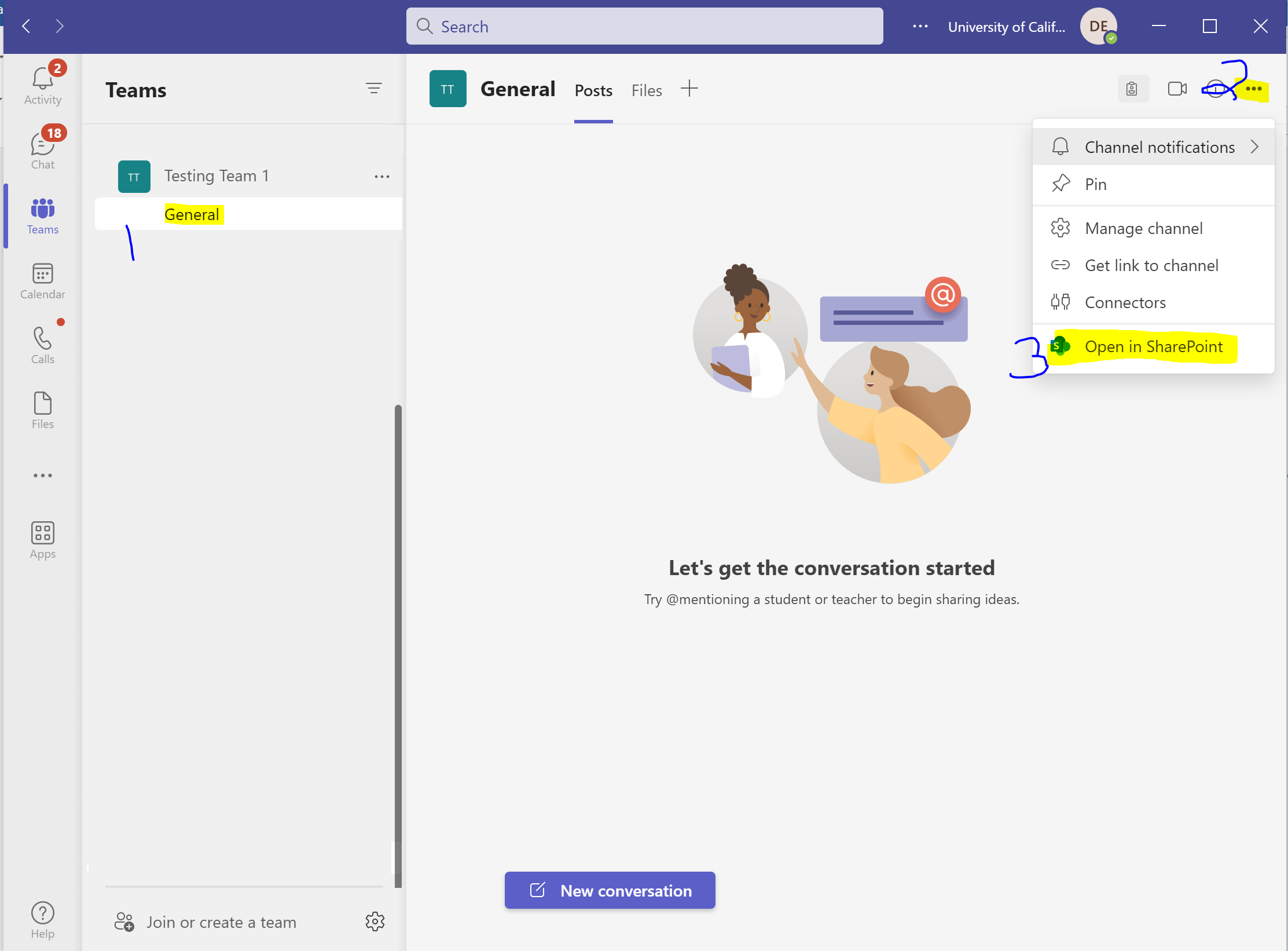
APPS
CHAT
The M365 Migration Admin User is an Account that is only used by the migration tool to migrate your Chat history from the Campus tenant. Once completed the migration tool will remove the Admin from the chat.
NAVIGATING HEALTH CAMPUS AND OUTSIDE TEAMS (WHERE IS MY TEAM)
While the desktop version of Microsoft Teams doesn't support the management Teams in different tenants, you can use this workaround to manage multiple Teams accounts:
- Open your Microsoft Teams desktop on the tenant you will spend most of your time in.
- Open a browser and go to Microsoft Teams (https://teams.microsoft.com) for the tenant you spend the next amount of time in.
-
Login with your @health.ucsd.edu email and select the tenant
Health Users will have access to Campus only if you belong to a Team whose Owner is on the Campus tenant. Campus users will continue to have access to the Campus Teams.
Now that you've been migrated to Health from Campus, you must login with your @health.ucsd.edu account and switch to the Campus tenant
- Health employees Login to Teams with
@health.ucsd.edu account.
-
Click on the Top Right Menu
University of California, San Diego Health.
-
From the dropdown click on
UC San Diego (Guest), which is the Campus Tenant.
Now that you've been migrated to Health from Campus, to access youre Health Teams, login with your @health.ucsd.edu account. switch to the Health tenant.
- Login to Teams with your
@health.ucsd.edu account.
-
Click on the Top Right Menu:
University of California, San Diego Health.
or
UC San Diego if you're on the Campus Tenant. -
From the dropdown click on the Tenant of your choosing:
University of California, San Diego Health, Health Tenant.
UC San Diego (Guest), Campus Tenant. - If you do not see the option for
UC San Diego (Guest), you have not been added as a Guest to any campus teams - refer to the
logout temporary solution
NEW FEATURES
Previously, we were managing the OneDrive files under the integrated OneDrive app in the cloud storage. However, to efficiently access the OneDrive files, now it has been moved above to the Cloud Storage. You can access all your private and shared files in the
'Files' tab.
With this option, you can view, create, upload, and manage your personal OneDrive files without navigating away from Teams.
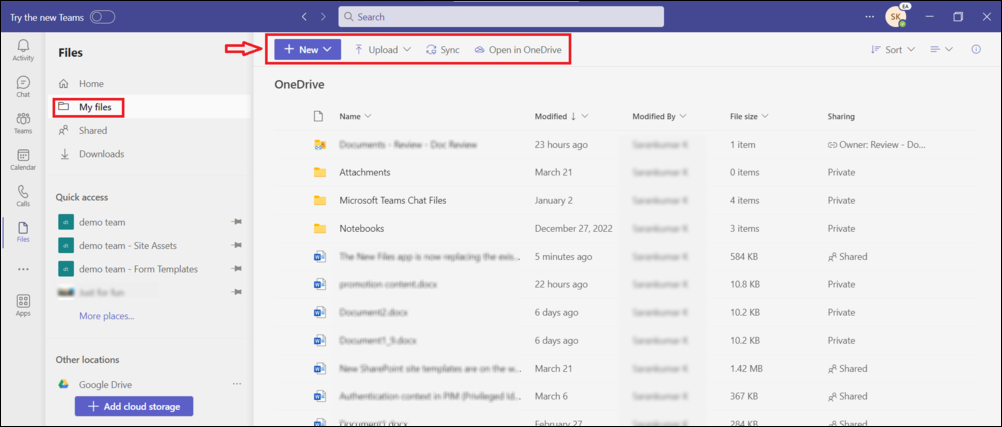
The new files app in Teams provides a modern interface for all your content from chats, channels, meetings, and any location from OneDrive or SharePoint. This will allow users to access your content without leaving or switching between different applications from Teams.
To enhance the user experience and collaboration, The new files app has introduced some tabs compared to the previous one.
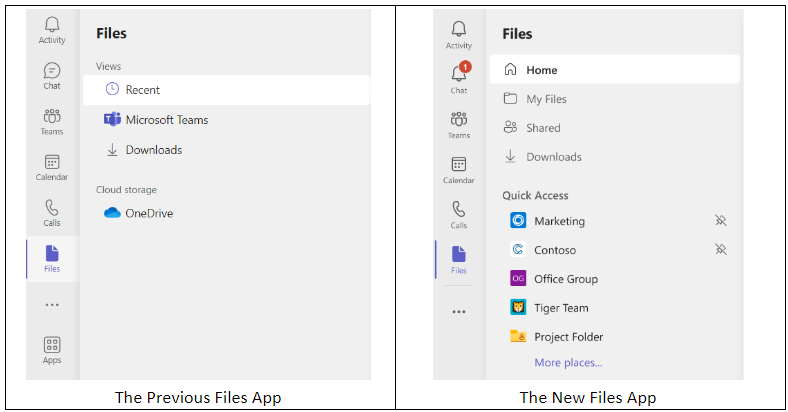
Yes, now the 'Recent' tab has been replaced with the 'Home' tab. Users can easily view the recently modified Word, Excel, PowerPoint, and PDF files separately. You can access the respective files by clicking the default filters applied at the top of the recent tab.
It eliminates the manual files' search in Microsoft Teams to keep track of the latest file updates.
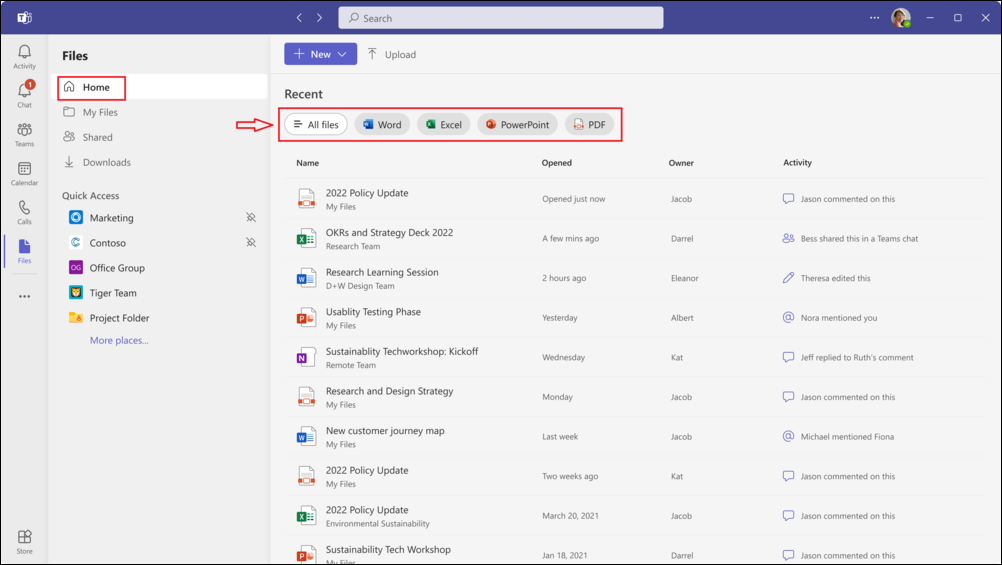
Shared files on Teams can be accessed without any hassle inside the 'Shared' tab in the new files app. This option will help us to quickly identify the personal files that you shared with others and shared with you.
This will potentially decrease the time required to search through all the shared documents across different channels, chats, or OneDrive. We can access the shared files under the below-mentioned tabs.
-
Shared with you - You can use this option to easily view the documents that have been shared with you in Microsoft Teams.
-
Shared by you - By using this option in Microsoft Teams, you can access the documents that you have shared with others.
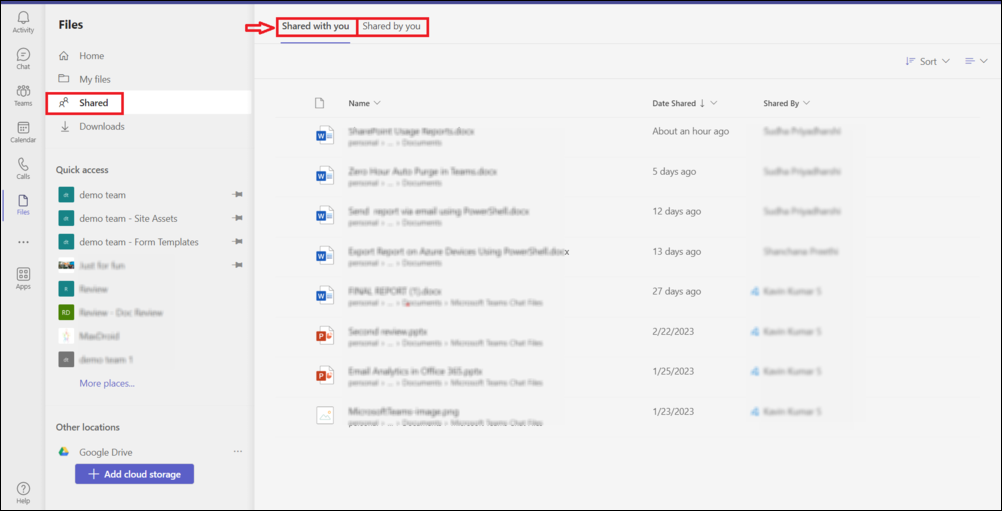
TEAMS TERMINOLOGY & DEFINITONS
See the most important differences between the Microsoft Teams guest and external access in the table below, or find the
comparison list of all features on Microsoft’s page.

External access is defined as “a way for Teams users from an entire external domain to find, call, chat, and set up meetings with you in Teams.” This means that if you work for Company “A” who uses Teams, and a colleague from Company “B” grants you external access to their Teams tenant, you can switch seamlessly between the two within the Teams app to communicate with that colleague. However,
external users have no access to your organization’s teams, channels, or team resources such as files, plans, wiki tab, etc.
Guest access lets you add individual users from outside your company to your teams and channels in Microsoft Teams. Anyone with a business or consumer email account, such as
Outlook, Gmail, or others, can participate as a Teams guest with full access to team chats, meetings, and files.
A Teams admin can control which features guests can (and can’t) use in Teams, such as delete or edit messages, use memes, stickers or Giphy in conversation, and so on. Check out
management options for Microsoft Teams guests.
TROUBLESHOOTING
Regarding your issue, please check below suggestion, if it helps to resolve your issue.
A. Check and Remove Outlook invites with Out of Office status
If someone sends you a calendar invite with date ranges from today till future with Out of Office selected, or if you create future Out of Office appointments, then Teams is somehow changing the status as well.
The easiest fix is to check if there is any invitation mentioned as Out of Office. If you find such an invitation, then remove it from your calendar and check the result. If not, check out the next solutions.
B. Turn on/off Don’t send automatic replies
-
Go to Outlook Web App.
-
Click the gear button.
-
Choose Mail> Automatic processing> Automatic replies
-
Now, tick the option that says Don’t send automatic replies.
-
If the issue persists, then remove it and check if it works.
-
If you have no Out of Office events in your calendar, you could try to apply the above procedure instead.
C. Change your Status Message in Teams
-
Go to your profile at the top of Teams.
-
Click Set status message.
-
Then, type the message that you want to show to other people in the box.
-
Click Done and you’re all set. Teams will refresh.
-
You may now delete the message.
D. Clear Teams cache:
-
Fully exit the Microsoft Teams desktop client. To do this, either right click Teams from the Icon Tray and select ‘Quit’, or run Task Manager and fully kill the process.
-
Go to File Explorer, and type in %appdata%\Microsoft\teams.
-
Once in the directory, you’ll see a few of the following folders:
-
From within ‘Application Cache’, go to Cache and delete any of the files in the Cache location.: %appdata%\Microsoft\teams\application cache\cache
-
From within ‘Blob_storage’, delete any files that are located in here if any.: %appdata%\Microsoft\teams\blob_storage
-
From within ‘Cache’, delete all files.: %appdata%\Microsoft\teams\Cache
-
From within ‘databases’, delete all files.: %appdata%\Microsoft\teams\databases
-
From within ‘GPUCache’, delete all files.: %appdata%\Microsoft\teams\GPUcache
-
From within ‘IndexedDB’, delete the .db file.: %appdata%\Microsoft\teams\IndexedDB
-
From within ‘Local Storage’, delete all files. : %appdata%\Microsoft\teams\Local Storage
-
Lastly, from within ‘tmp’, delete any file. : %appdata%\Microsoft\teams\tmp
Once finally done clearing, you can now restart Teams from your local desktop and all cache will be cleared from the desktop app.
+ Expand All